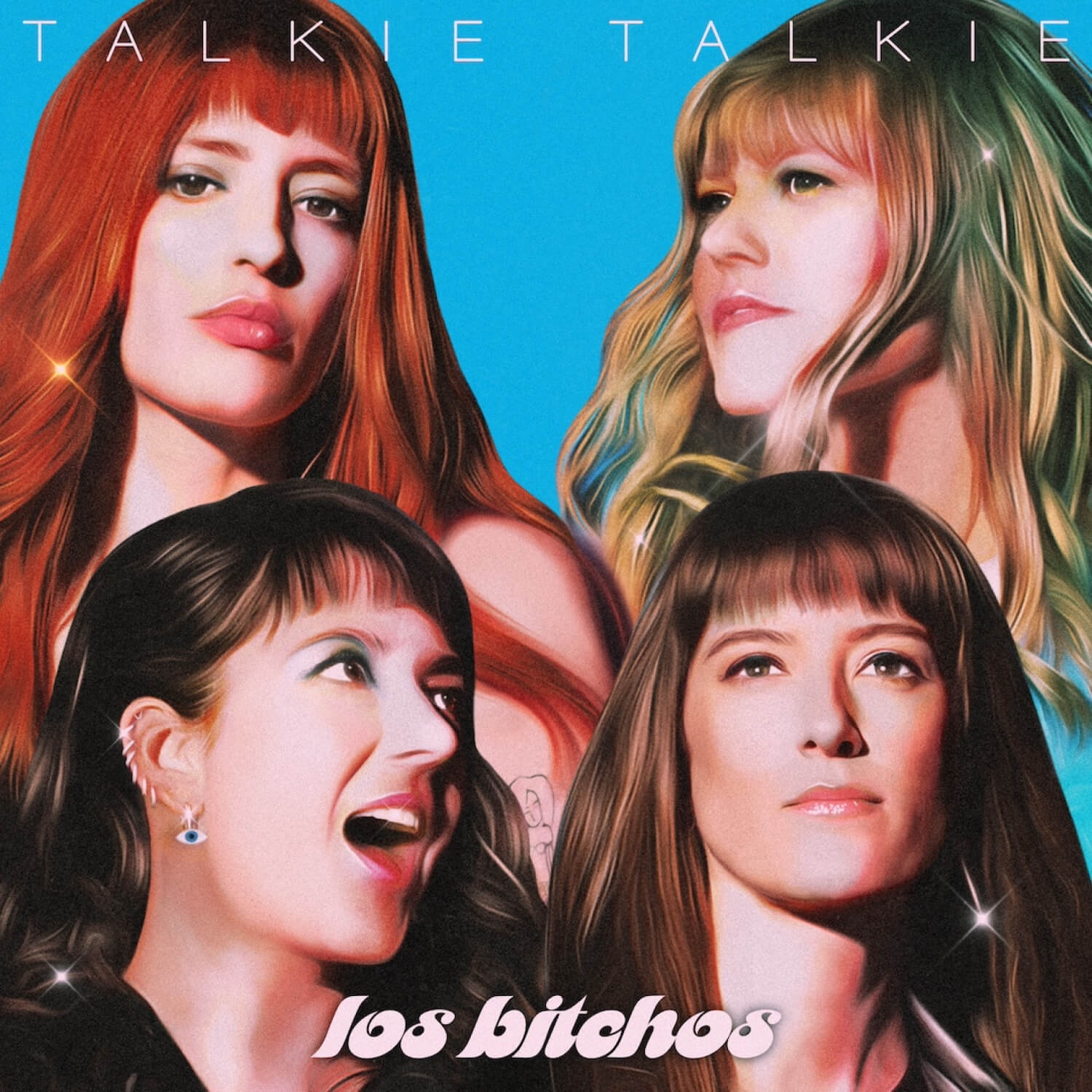A dozen summer songs. I don’t know why London’s Los Bitchos are waiting until the end of August to release the perfect summer soundtrack, but there’ll still be a good three weeks left to fill with their new Talkie Talkie (CD, LP and download out August 30 from City Slang), and more if you allow for the changing seasons of climate change. The Bitchos’s second album is straight-up smart, sophisticated, instrumental loveliness. It reminds me of tracks by the likes of Burt Bacharach or Herb Alpert in that it’s pop pure and simple, but with richer harmonic structures and less predictable turns along the way. But they’re also direct descendents of the surf guitar tradition, the glimmering greatness of the Chantays and the Ventures. The album closer “Let Me Cook You” even includes some Dick Dale stylized speed-picking. Is “surfisticated” a thing? To put the four women of Los Bitchos among yet another male of decades past, they do for tremolo riffing what Ennio Morricone did for twangy western themes. A third of the album has already been released, with adorable videos to match, and the tunes are absolutely infectious. There’s no singing on Talkie Talkie, but with such tightly crafted melodies, you won’t miss it.
The Epic Rock of Gilgamesh. Often when trying to describe a new record, I find myself wanting to use the phrase “but it doesn’t suck.” So many offenses have been created in the name of rock that it’s sometimes difficult to give the basics of a project without making it sound like a list of similar but insufferable projects which have come before. So, Gilgamesh, the debut album by Rubi Ate the Fig (self-released to streaming platforms last month) seeks a fusion of classic 1970s rock and traditional Arabic music, but it doesn’t suck. And with the recent popularity of the Tuareg band Tinariwen, maybe the time is right to cross back over and kiss the hem of the source. Guitarist, singer and songwriter Sharoón Eliashar was born in Jerusalem and raised in the California desert, which works as well as anything to outline of their sound. There’s an assuredness in her vocals and a twinge of exoticism in the melodies that reminds me at times of Heart’s Ann Wilson (who sadly postponed tour dates last month to undergo chemotherapy), and if her songs aren’t quite as catchy, they’re nevertheless just as solid. She realizes them with a five-piece backing band that includes the stringed qanun and saz and a selection of Middle Eastern percussion along with more traditional rock implements. Five guest players expand the palette with oud, ney and other traditional instruments. Fusion of any musical forms is often a bit silly, and Gilgamesh doesn’t break that sometimes rule. But it doesn’t need to, either. Repeat listens unveil the riches of Eliashar’s songs.
Who was that masked trout? Executing the improbable if not the impossible is the business of Detroit a cappella outfit the 180-Gs. The mysterious ensemble had already realized unlikely arrangements of songs by the Cardiacs, Negativland and the Residents for five-part male harmonies before taking on the much celebrated, sometimes maligned 1969 album Trout Mask Replica by Captain Beefheart and his Magic Band. Mastermind Don Van Vliet and his talented accomplices pulled off a brilliant merging of Howlin’ Wolf’s blues and Ornette Coleman’s multi-angular jazz on their third release, an expansive double album released by Frank Zappa’s Straight imprint via Warner Brothers. Trout Mask Replica Replica (CD and download self-released last month) is a ridiculously faithful rendering that underscores how mad the original compositions were. Past 180-Gs efforts have focused on material that works with some sort of thematic through-line. How unhinged the Trout Mask songs were is underscored by hearing them realized by a group of voices. But whose voices they are is hard to say. Presumably it’s all done by one David Minnick, or at least it’s difficult to find another name associated with the group, and band photos are all of figurines. Honestly, I don’t know if it’d be more impressive to know that he did it all himself or that he found four other people willing to perfect the arrangements with him. But either way, it’s a remarkable, and remarkably ridiculous, accomplishment.
The Second Lives of Plants. Last summer, Pioneer Works and Sacred Bones Records presented a surprising dedication at Green-wood Cemetery to Mort Garson’s obscure 1976 album Plantasia with performances by Laraaji, DAOUI (Angel Bat Dawid & Oui Ennui), and others. This year’s late-season back-to-nature musical gathering happens in the MoMA Sculpture Garden on August 28 with a rare screening of the 1979 documentary The Secret Life of Plants. The 97-minute film, featuring time-lapse footage of plants living lives more complicated than they’re often given credit for, is no doubt best remembered for Stevie Wonder’s soundtrack, released as the largely instrumental double album Stevie Wonder’s Journey Through “The Secret Life of Plants”. The album came on the heels of one of the greatest runs of albums in pop history, beginning with 1972’s Music of My Mind and running through Talking Book (also 1972), Innervisions (1973), Fullfillingness’ First Finale (1974) and Songs in the Key of Life (1976). Plants sits as a bit of an oddity before Wonder stepped into the ’80s with the platinum-selling Hotter Than July. The album itself is charming and oddly wonderful (pun unintended but almost inevitable). Hearing it in situ will no doubt help to understand the album’s own secret life.
Singled out. New Brunswick, NJ, indie icons Screaming Females called it quits last December after some 18 years. In her first release since the break-up, frontwoman Marissa Paternoster has returned to a moniker she’s been using since she was 16. Paternoster has released three albums, as well as singles and demos, under the name Noun, working with a rotating cast of accomplices. Wanted/Consumed, the new single (cassette and download self-released last month), features a new two-piece Noun with multi-instrumentalist Phillip Price (Kayo Dot, Moor Jewelry). The two songs are solid, fierce and catchy. It’s good to know Patermoster is still screaming.
Liverpool’s unflappable Unstoppable Sweeties Show seemed to have found their weird, or deepened their commitment to it, during the pandemic, moving toward improvisation and noise on 2021’s Analogy to an Allergy and applied those obfuscations to their prog-punk framework on 2023’s Frosted Glass. Their new digital single Thick Daddy gets back to some of their earlier grittiness. “Thick” is six minutes of lo-fi geometry with lots of howling. “Daddy” clocks in at nearly 10 with a half-buried narrative and not quite interlocking parts of smooth sax, jazzy guitar and space bass. At press time, the single had been up on their Bandcamp page, marked “Available for FREE today!” for two weeks, so get it before they remember.










